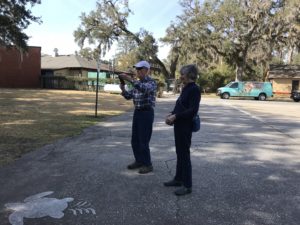
My parents, David and Betty Clymer, came to spend the month of February here on St. Simons Island. They did the same thing last year. We love having them so close and getting to see them almost every day. We spend a lot of time exploring together. Last year we hit most of the tourist hot spots, so this year we made a new list of things to see. First on the list was the Georgia Sea Turtle Center on Jekyll Island.
Last year we were amazed at the number of people who told us how great the Georgia Sea Turtle Center was. We drove past it, and it looked like a plain brick building. How interesting could it be? But appearances can be deceiving.
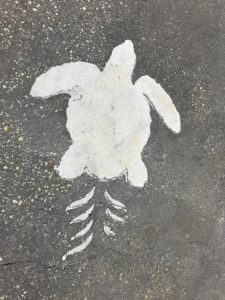
Our adventure to the Georgia Sea Turtle Center began on the drive there. The website says to go over the Jekyll Island bridge and take the first left toward the Jekyll Island Historic Landmark District. Then follow the painted sea turtles on the roadway. We weren’t sure what this meant until we spotted the sea turtles. They were easy to see and helped us feel like we were on a treasure hunt as we followed them into the parking lot.
After the requisite picture by the entrance sign, we walked on a memorial pathway filled with interesting messages. The pathway ended in a giant brickwork sea turtle at the entrance to the Georgia Sea Turtle Center. Or maybe not so giant – certain kinds of sea turtles can be very large.
 We entered the Center through the Gift Shop and paid for our entry, $8 per adult. We got a Sea Turtle Journey card that encouraged us to find the stamps in the Information Center. The stamps were easy to find, but you could choose which stamp to get at the embossing station. You didn’t know what it would say until after you stamped the card. My female sea turtle came from a nest above high tide, migrated to the Caribbean Sea, and lived to be 60 years old.
We entered the Center through the Gift Shop and paid for our entry, $8 per adult. We got a Sea Turtle Journey card that encouraged us to find the stamps in the Information Center. The stamps were easy to find, but you could choose which stamp to get at the embossing station. You didn’t know what it would say until after you stamped the card. My female sea turtle came from a nest above high tide, migrated to the Caribbean Sea, and lived to be 60 years old.
We also learned about the different kinds of sea turtles: Hawksbill, Kemp’s Ridley, Leatherback, Green, and Loggerhead. Each of the sea turtles has its own habitat, nesting beaches, and diet. All of the sea turtles prefer warm waters. We watched an interesting video about the 2014 rescue of Kemp’s Ridley Sea Turtles on Cape Cod. A very active group rescues sea turtles that become trapped by the hook of Cape Cod and get cold-stunned. The only way to save them is to pick them up and slowly raise their body temperature. In 2014 this dedicated rescue group saved over 1,000 sea turtles.
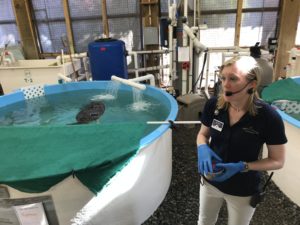
The most interesting part of the Georgia Sea Turtle Center is the Rescue Hospital which treats injured sea turtles. The Education Specialist gave us a talk on the sea turtles currently in their care. These turtles are kept in large tanks that have mirrors above them so you can see the turtles. Some of them are covered because the sea turtles are traumatized and don’t need to see people. The majority of injuries are from boat propellers. During Hurricane Irma, all the patients in the hospital were evacuated.
Each of the patients in the Rescue Hospital has a record of care that you can read. It gives the sea turtle’s name, what brought them to the hospital, and the care they have been given while there. The record includes progress and expected release back into the ocean. I especially enjoyed seeing the baby sea turtles, born at the hospital when their nest was compromised. Did you know the sex of a sea turtle is determined by the temperature in the nest? All the hatchlings at the Georgia Sea Turtle Center are female because they are most endangered.
We stayed at the Sea Turtle Center about three hours and found it fascinating. Definitely a place I would recommend to anyone with some time in the area.


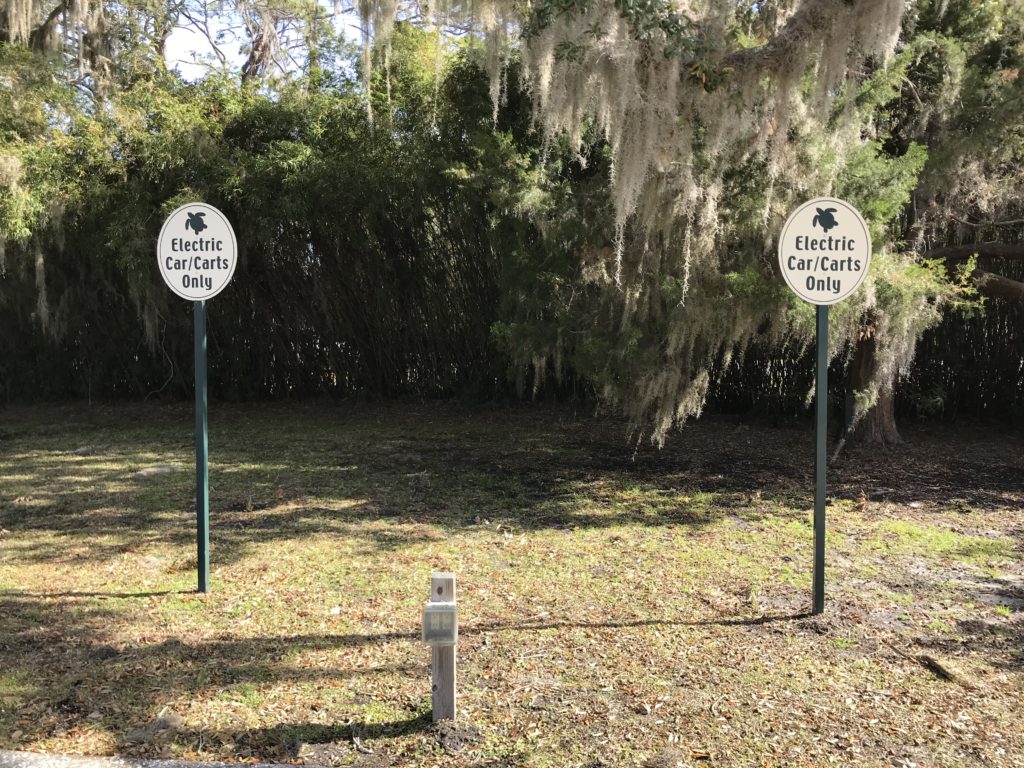
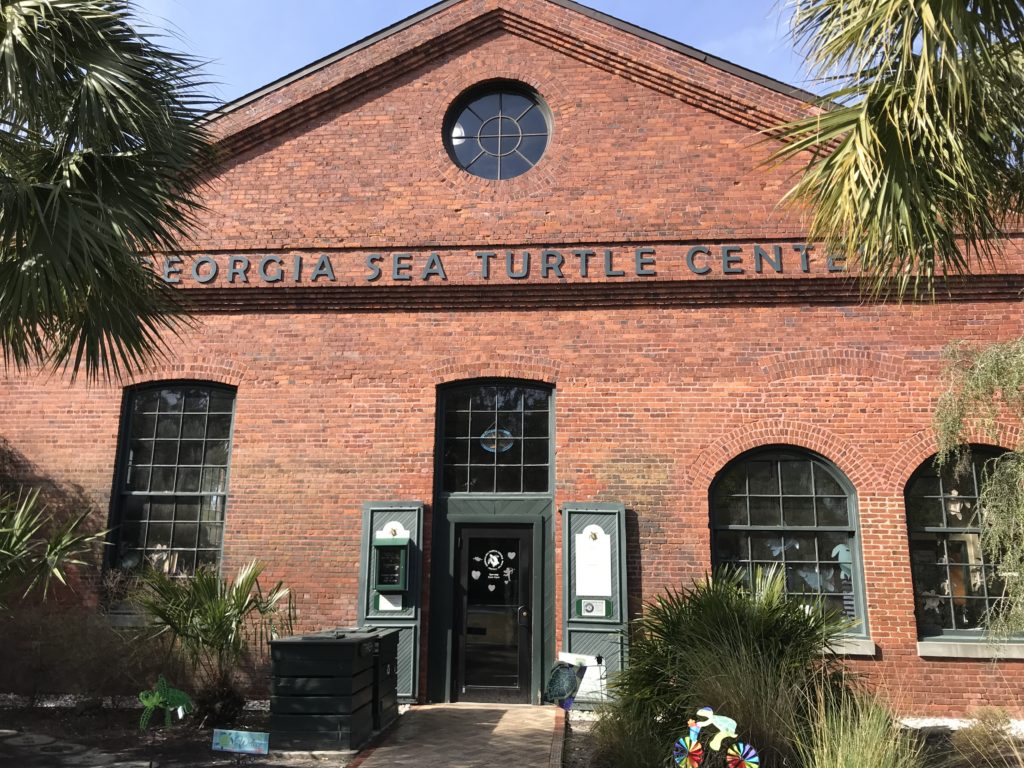
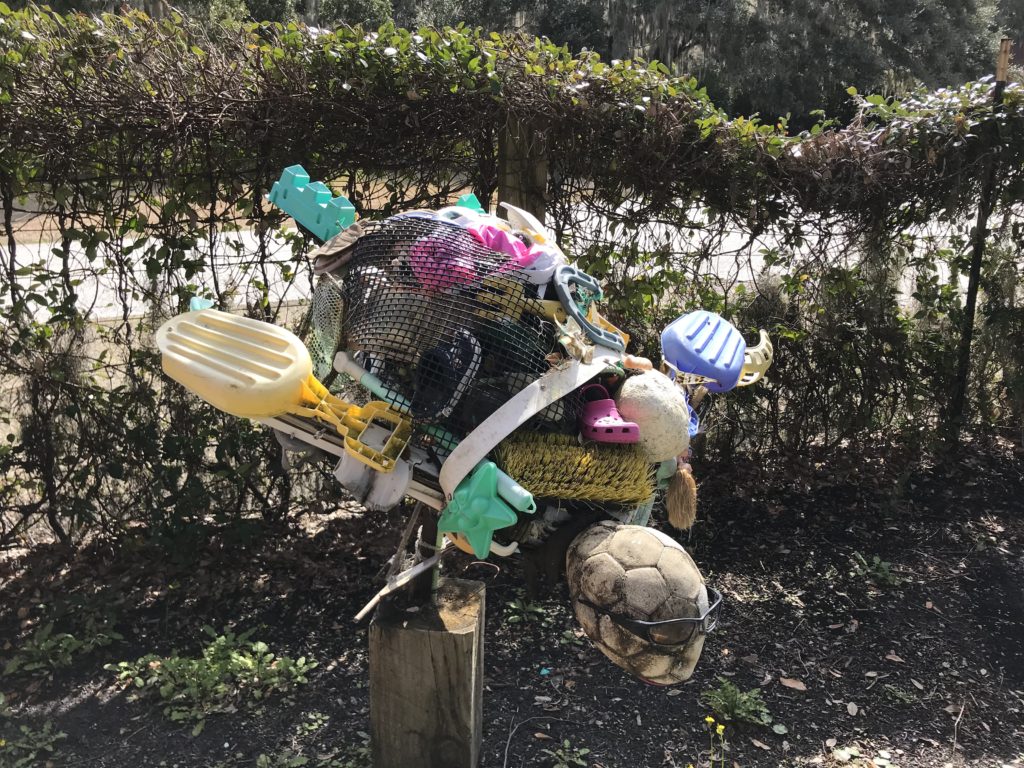
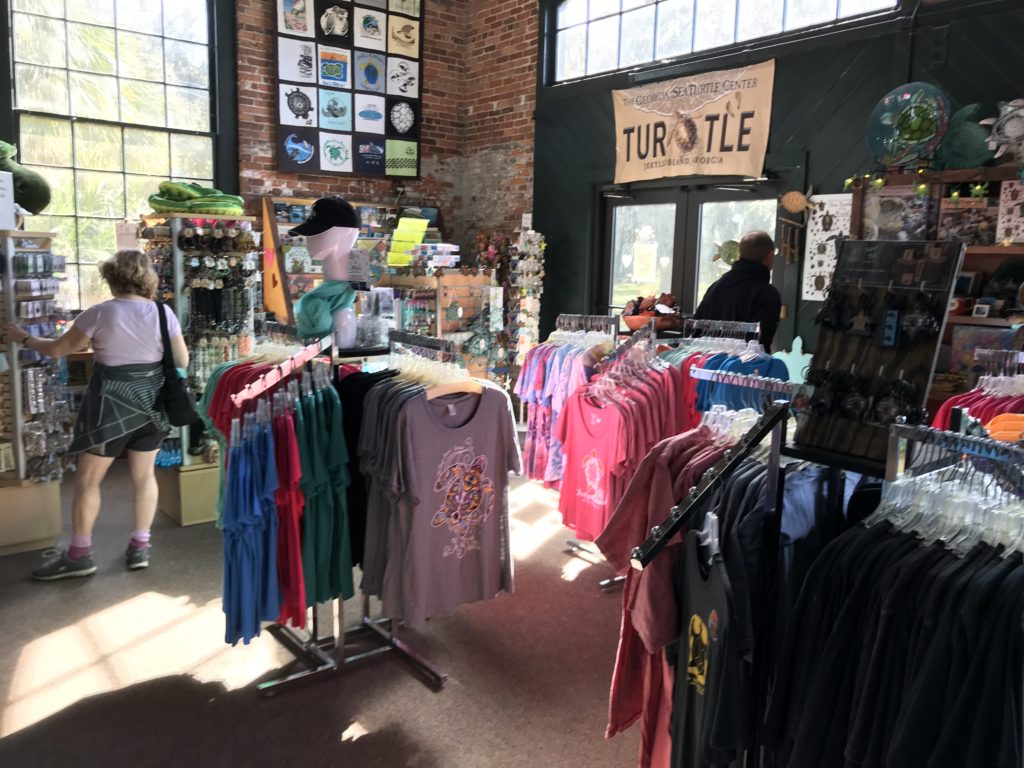
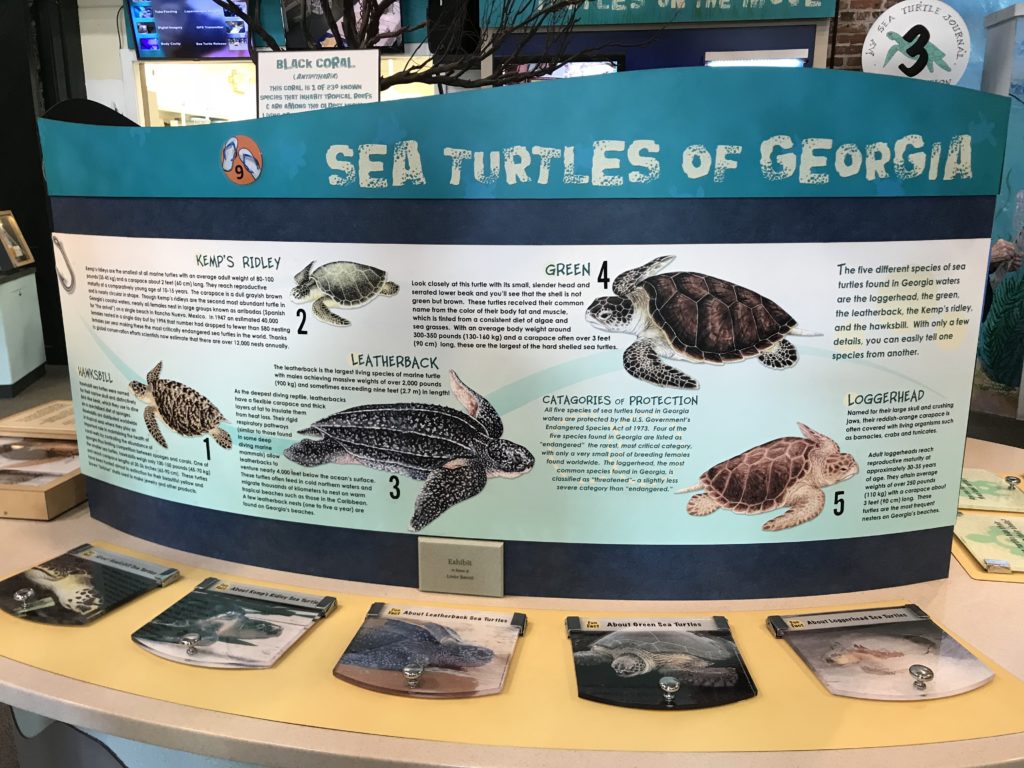
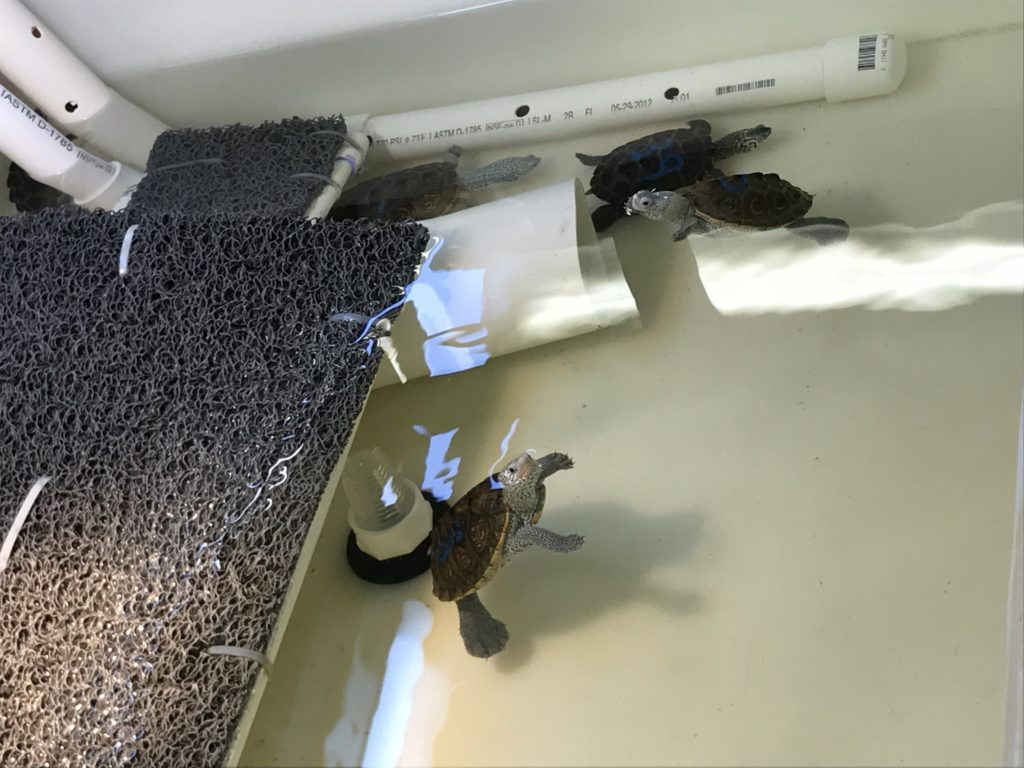
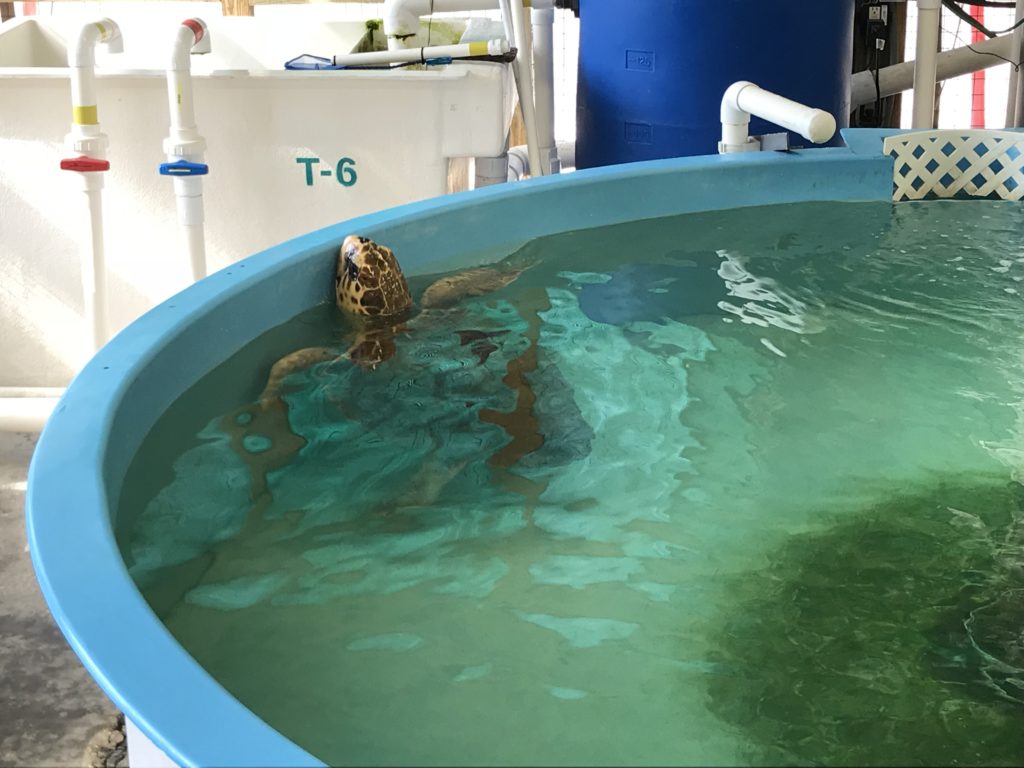
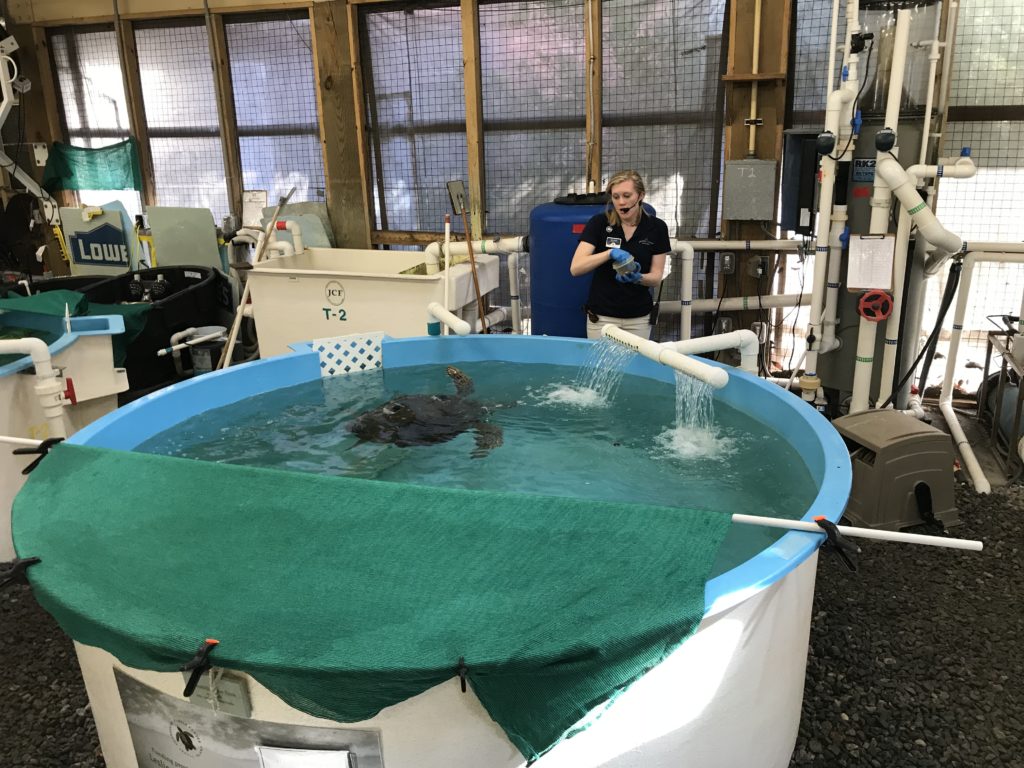
The marine life we’ve been blessed with to enjoy is amazing. So beautiful…yet so fragile.
The sea turtles are having problems because of loss of nesting habitat and pollution in their waters. They are subject to many more diseases related to the pollution.